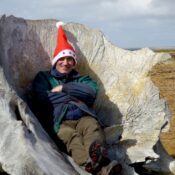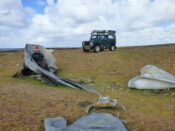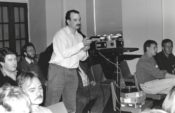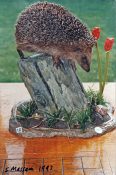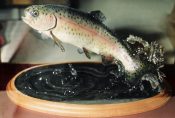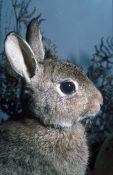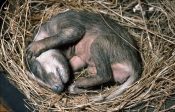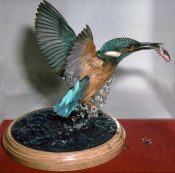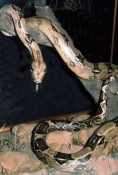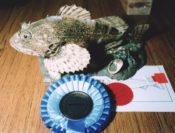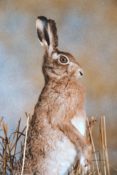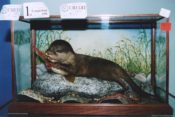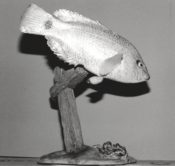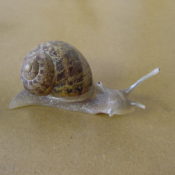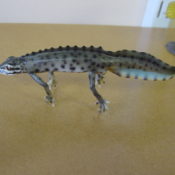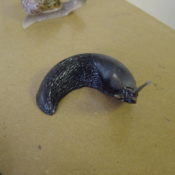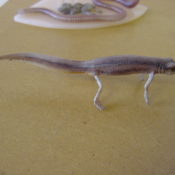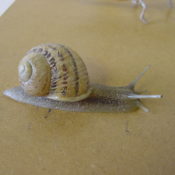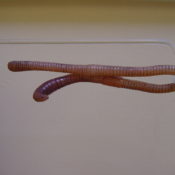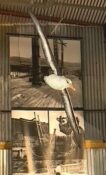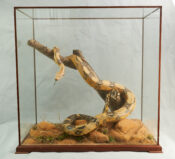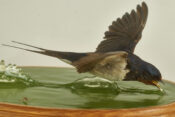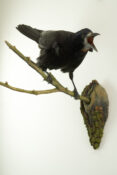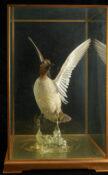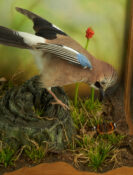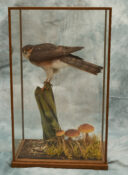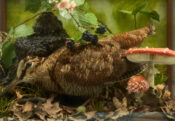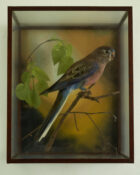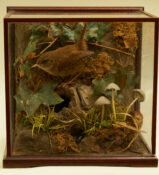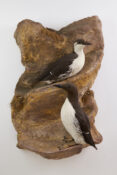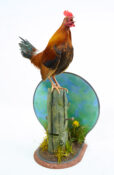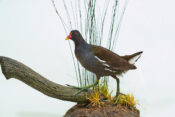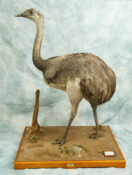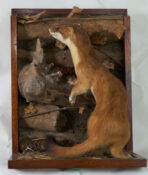STEPHEN MASSAM
What/Who inspired you to take up taxidermy?
I have always had a fascination for natural history in all its glorious forms. I was never really inspired into taking up taxidermy by anyone in particular, but received encouragement particularly from my grandfather, and also my parents, who were very tolerant.
When did you start and what was the first item you worked on?
I started collecting skeletal material from the age of about seven. This developed into the simple curing of skins, collecting feathers, and pinning out and drying birds' wings. Having discovered the book, The Amateur Taxidermist by Jean Labrie in the school library, and wanting to keep as many of the specimens I found as possible, I started practising taxidermy in my early teens. My very first attempt was a field mouse, a complete disaster!
What was your first break into the industry?
Taxidermy was never really my intended profession. I had an interest in engineering, but due to being blind in my right eye, and with the heightened interest in health and safety at that time, on leaving school at 16, I was unable to obtain an apprenticeship in engineering. I had a dramatic change of tack and spent four years training as an old school traditional butcher.
I first joined The Guild of Taxidermists in 1979 on the recommendation of a friend. I continued practising my taxidermy in my limited free time, and picked up an occasional commission along the way.
My first break into the industry came when I took some of my work along to our local museum (Southend Central) for some constructive criticism and to my great surprise, they wanted to purchase the specimens for their schools loan service. The specimens weren't for sale; they were my own personal collection, but the museum's interest in my work put the idea in my head that perhaps I could make a living as a taxidermist. The museum's natural history officer at that time, John Skinner, kindly put me in touch with Jeremy Heath, a taxidermist at Colchester Museum. This was to be my first contact with a practising taxidermist and Jerry gave me some much appreciated advice.
Four years on and having by this time set up as a freelance taxidermist, I met Jerry again at one of the Guild conferences. Seeing that I had taken his advice and my work had dramatically improved, he gave me my first museum order. The rest, as they say, is history.
Work History / Career
My early credit and competition history up to 1988 can be found in an old issue of the Guild journal.
I have never been very prolific, preferring to prepare work to the best of my ability, producing accompanying modelled plants/foliage and groundwork in bespoke oak and walnut display cases, from reclaimed timber mouldings I machined.
I mostly produced work for a few collectors, educational bodies and museums. I was never into trophy work.
I first came to the Falkland Islands in 2001, having replied to an advertisement in the Guild newsletter. The idea was to to give a 6-week taxidermy crash course. That, of course, was never feasible, but I fell in love with the Islands. Taking on ever increasing contracts with the Falkland Islands Museum, I relocated to the Islands in 2004 and was given a permanent position in the museum. I decided to leave the museum in 2015 to once again become freelance. I still prepare the occasional specimen for museums, but more recently enjoy sculpting and taking time out to explore these amazing islands and their wildlife.
Notable Projects?
Working with Derek Frampton in Taiwan on a large mammal project, and again with Derek on modelling groundwork and plants for the Royal Scottish Museum.
Here in the Falkland Islands, I have prepared a small diorama. I have also been privileged to work on the island of South Georgia preparing specimens for their natural history gallery.
Who inspired you the most when you were learning?
Derek Frampton, Emily Mayer, Jack Fishwick, Mike Gadd, David Astley, Peter Summers, Don Sharp, James Dickinson to name but a few notable past and present Guild members.
Who inspires you the most now or is it just Mother Nature?
Although I am impressed by the work of others, at the end of the day, my inspiration mostly comes from my observations of the natural world.
Have you helped or taught any successful students?
I have always been happy to share what I have learnt over the years with others, and like to think I have helped a few taxidermists over the years, but can't claim to have taught anyone in particular.
How have you seen taxidermy change?
First and foremost, I can see taxidermy has become more widely accepted, and can be displayed in retail outlets and public premises without fear of having a brick thrown through the window.
At long last, I think people are starting to understand that by far, the majority of taxidermists are law abiding and are not out to kill everything in sight.
There also seem to be more women taking up taxidermy, which is great to see. I haven't attended a Guild conference for years, but I see from the more recent group photos that women are no longer a minority.
The use of commercial forms, and dedicated products are now common place and all the information you ever wished for can now be found on the internet.
However, there is a downside to this as I now see a lot of poorly prepared work being offered for sale, that could jeopardise all the good work the Guild had put in over the years to raise standards.

Cold cast aluminium portrait of sheep as reminder of commander of British Armed Forces' time in Falklands
Interests (other than taxidermy)
- Sculpting has always had its place in my work as a taxidermist, but now things have switched for me and I'm preparing more art sculptures than taxidermy.
- I have always had an interest in model engineering and often make tools and machines to assist me with my work.
- Woodwork and cabinet making - I used to machine up mouldings from reclaimed hardwoods to make my own display cases.
- Plant modelling - used in my taxidermy displays.
- Pottery - I used to make slip cast moulds for a small pottery.
- Butchery - on leaving school, I trained as a butcher for four years. Now living in the Falkland Islands, this skill is coming in handy and it's something I enjoy.
- Off-road driving, walking, wild camping and exploring the great outdoors - I especially like beach combing and camp fires on the beach.
- Bird and wildlife watching
- Gardening, a necessity here in the Falkland Islands if you want fresh veg.
Guild Qualifications
See Guild credit listings. I have not entered any specimens for credits or competitions since moving to the Falklands in 2001.
Guild Committee Work
I was, at one time membership secretary, and a general member of the committee for a number of years.
Lectures
Prior to my relocating to the Falklands I often gave of talks and practical demonstrations at Guild conferences and seminars, and had a number of articles published in past Guild journals.
Judging
Again, prior to my relocating to the Falklands, I was often involved with judging at Guild conferences and seminars. I actually enjoyed judging and like to think I inspired some into improving the quality of their work. I can't say that I was always right in my judgment, but always suggested that entrants take on board my comments. I also sought the opinions of other professionals to see if they pick up on the same points.
Steve Massam, 2000

